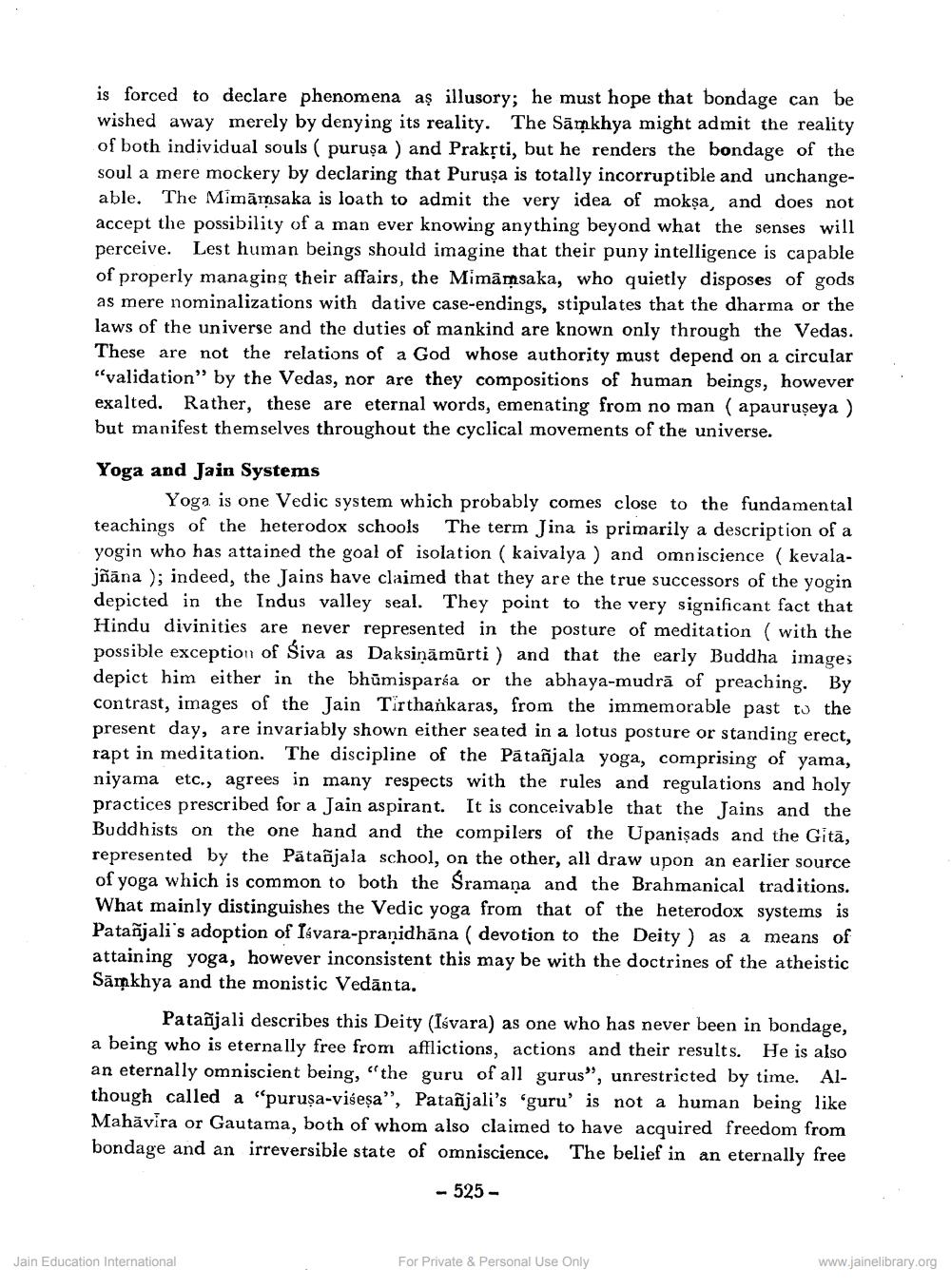Book Title: Jain Concept of The Sacred Author(s): Padmanabh S Jaini Publisher: Z_Kailashchandra_Shastri_Abhinandan_Granth_012048.pdf View full book textPage 2
________________ is forced to declare phenomena as illusory; he must hope that bondage can be wished away merely by denying its reality. The Samkhya might admit the reality of both individual souls (puruşa ) and Prakṛti, but he renders the bondage of the soul a mere mockery by declaring that Puruşa is totally incorruptible and unchangeable. The Mimämsaka is loath to admit the very idea of mokşa, and does not accept the possibility of a man ever knowing anything beyond what the senses will perceive. Lest human beings should imagine that their puny intelligence is capable of properly managing their affairs, the Mimämsaka, who quietly disposes of gods as mere nominalizations with dative case-endings, stipulates that the dharma or the laws of the universe and the duties of mankind are known only through the Vedas. These are not the relations of a God whose authority must depend on a circular "validation" by the Vedas, nor are they compositions of human beings, however exalted. Rather, these are eternal words, emenating from no man (apauruşeya) but manifest themselves throughout the cyclical movements of the universe. Yoga and Jain Systems Yoga is one Vedic system which probably comes close to the fundamental teachings of the heterodox schools The term Jina is primarily a description of a yogin who has attained the goal of isolation (kaivalya) and omniscience (kevalajñāna); indeed, the Jains have claimed that they are the true successors of the yogin depicted in the Indus valley seal. They point to the very significant fact that Hindu divinities are never represented in the posture of meditation (with the possible exception of Siva as Daksiņāmārti) and that the early Buddha images depict him either in the bhämisparia or the abhaya-mudra of preaching. By contrast, images of the Jain Tirthankaras, from the immemorable past to the present day, are invariably shown either seated in a lotus posture or standing erect, rapt in meditation. The discipline of the Patanjala yoga, comprising of yama, niyama etc., agrees in many respects with the rules and regulations and holy practices prescribed for a Jain aspirant. It is conceivable that the Jains and the Buddhists on the one hand and the compilers of the Upanisads and the Gita, represented by the Patanjala school, on the other, all draw upon an earlier source of yoga which is common to both the Śramana and the Brahmanical traditions. What mainly distinguishes the Vedic yoga from that of the heterodox systems is Patanjali's adoption of Isvara-pranidhana ( devotion to the Deity) as a means of attaining yoga, however inconsistent this may be with the doctrines of the atheistic Samkhya and the monistic Vedanta, Patanjali describes this Deity (Iivara) as one who has never been in bondage, a being who is eternally free from afflictions, actions and their results. an eternally omniscient being, "the guru of all gurus", unrestricted by time. Although called a "purusa-višesa", Patanjali's 'guru' is not a human being like Mahavira or Gautama, both of whom also claimed to have acquired freedom from bondage and an irreversible state of omniscience. The belief in an eternally free - 525 Jain Education International For Private & Personal Use Only www.jainelibrary.orgPage Navigation
1 2 3 4 5 6 7 8 9 10
